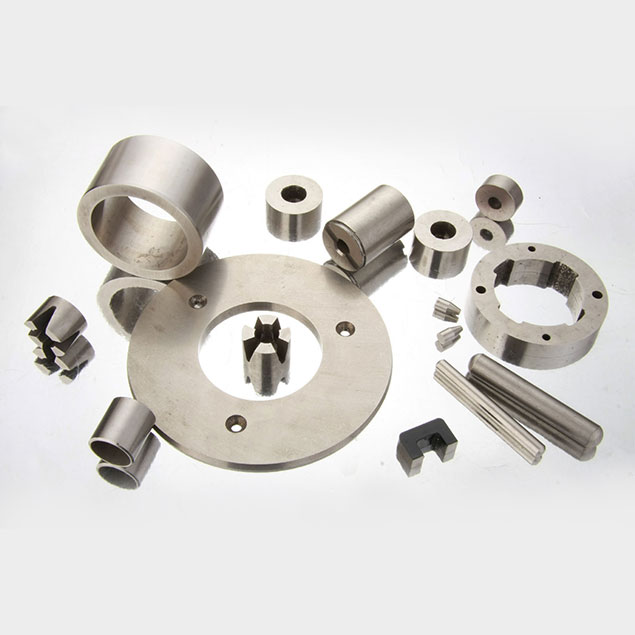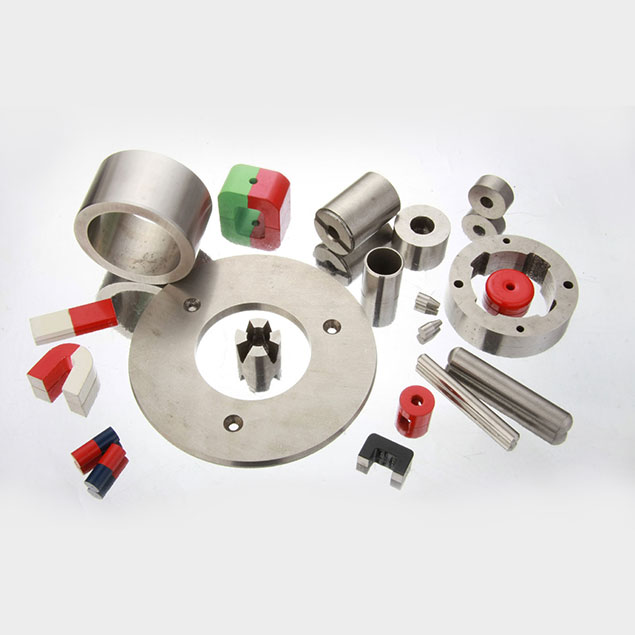AlNiCo Magnet
Sintered & Cast AlNiCo
Though it names AlNiCo, it is not an alloy containing Aluminum (Al), Nickel (Ni), Cobalt (Co). It also contains Cobalt, Nickel, and Aluminum with the addition of Iron, Copper, and sometimes Titanium that help make them become stronger permanent magnets. Max Working Temperature of AlNiCo ranges from 450°C to 550°C.There are two kinds of AlNiCo, Sintered AlNiCo and Cast AlNiCo. Cast magnets may be manufactured in complex shapes and the mould charge (sand mould) is cheap. But due to the sand mould edges, cast alnico has darkened edges with a slightly rough texture. To get smooth surface, grounding is needed. Sintered AlNiCo offer slightly lower magnetic properties but better mechanical characteristics. Most AlNiCo magnet grades are anisotropic (they can only be magnetized in a single axis /direction – they are the more powerful magnet grades of AlNiCo. The others are isotropic (they can be magnetized in any direction or directions) – they are weaker but offer more design and performance flexibility.
*Customized designs are available.
*Max working temperature can be as high as 550°C.
*Disadvantage: Br and BH (max) are not as high as rare earth magnet.
*Advantage: High energies and relatively low coercivity; High magnetic flux density; low mould charge; stable temperature properties; easy to shape.
*Application:
Electronic ignition systems
Watt hour meters
Medical instruments
Guitar pickups
Industrial motors
Hand tools
Vending machines
Automatic control appliance



